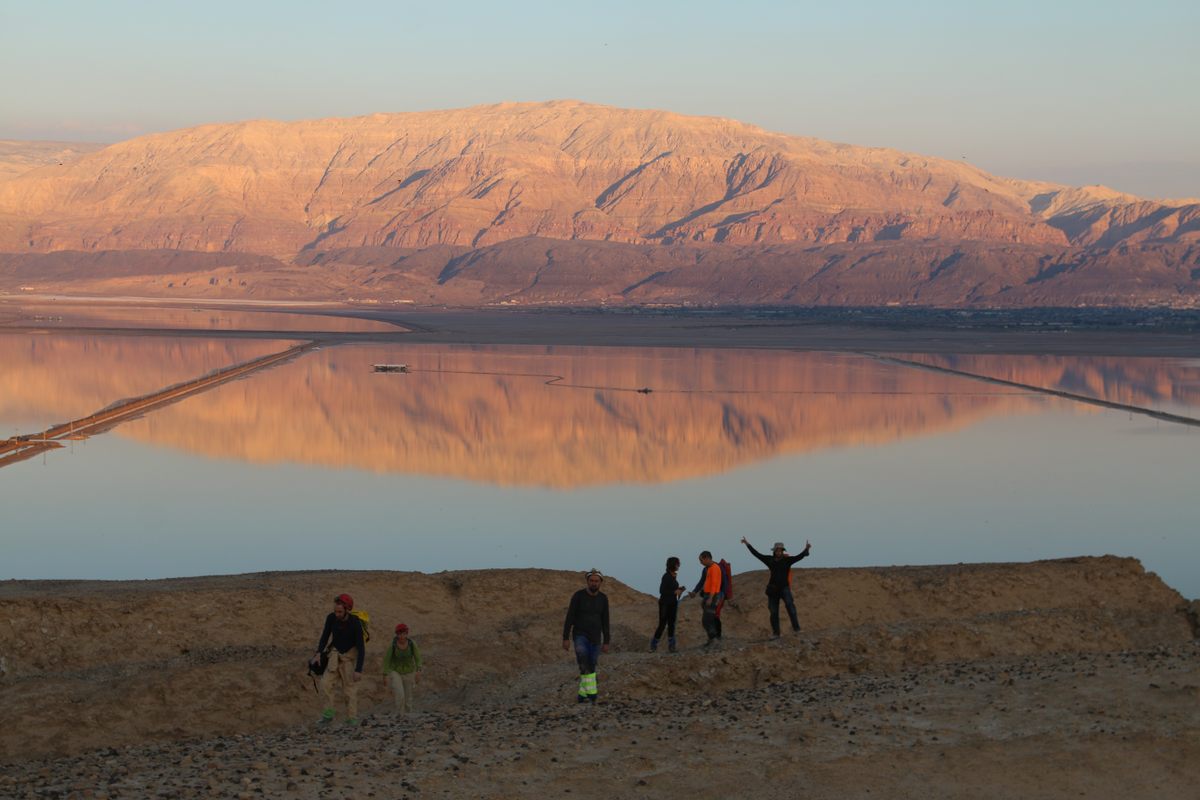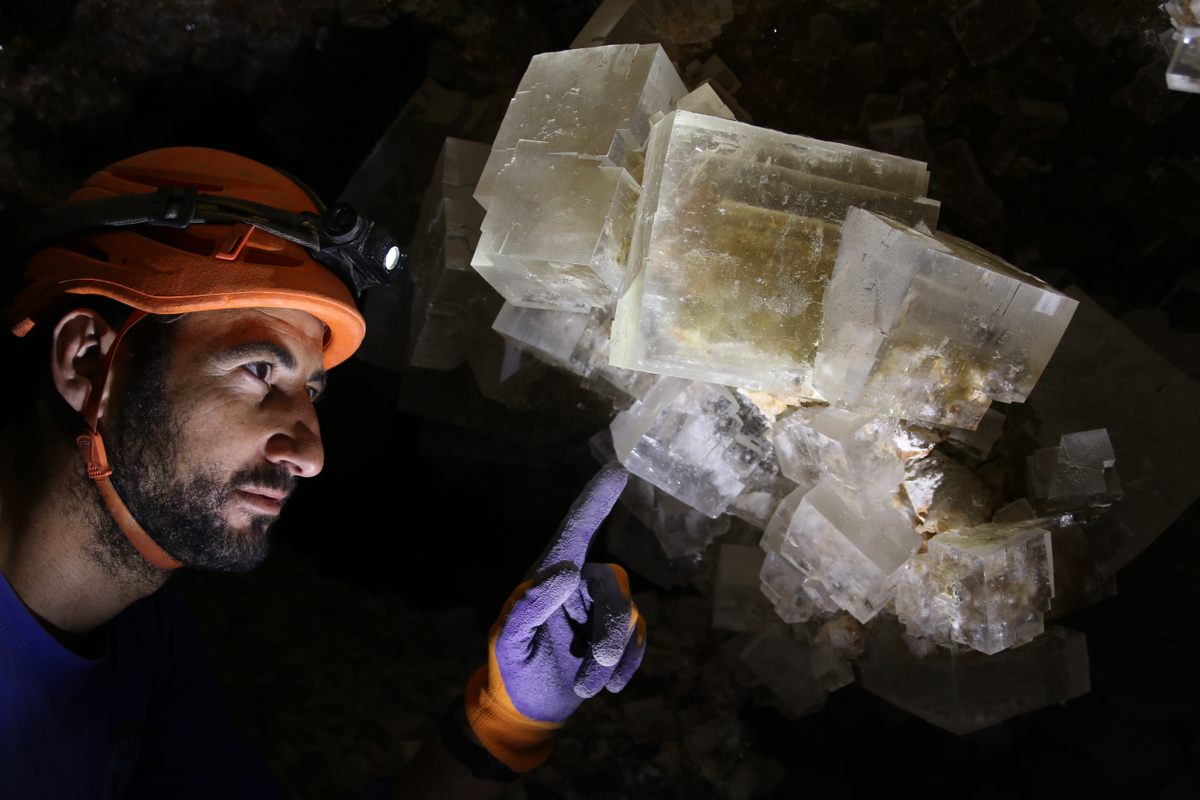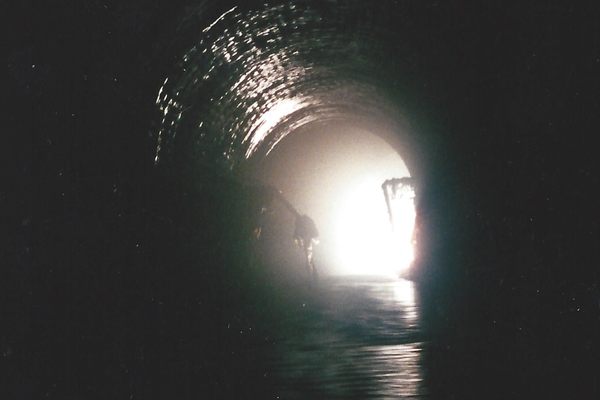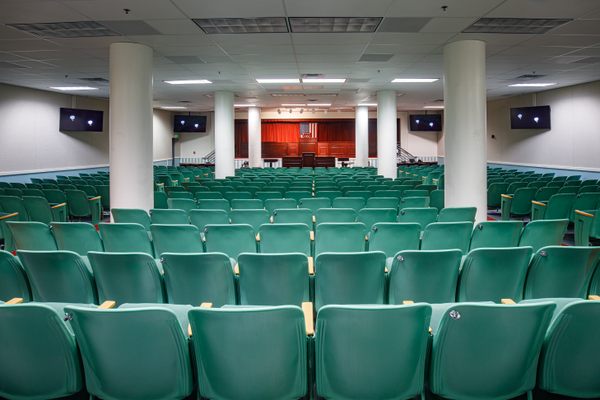
The Friendly Rivalry—Between Israel and Iran—Over the World’s Longest Salt Cave
Spectacular Malcham Cave, at more than six miles, currently holds the title.
Israelis and Palestinians both occupy a landscape that holds an impossible combination of myth, faith, and the mundane. A hip coffee truck stands by Armageddon, the biblical site of the apocalypse. Along the Stations of the Cross in Jerusalem there are bodegas, hummus joints, and bakeries. At the site of a gas station where I stopped to refuel, there once were two biblical cities of ill repute: Sodom and Gomorrah. There are no clear archaeological findings attesting to their presence, but in this case myth has won out.
Not far from that gas station stands Mount Sodom, an impressive, craggy, sand-colored hill. At its foot waits Itai Schkolnik, founder of the Israeli Caving Club. By his side is his wife, Ekaterina, a Russian-born speleologist, with six-month-old Sebastian peeking out of a sling. We climb the mountain together, the sparkling expanse of the Dead Sea below. The Schkolniks gracefully hop across the rocks until we reach the enormous, remarkable opening of a cave.

Mount Sodom is a rare geological phenomenon. It started to form more than five million years ago, when the Mediterranean’s waters flowed into the Dead Sea Rift and created the Sodom lagoon. Salt accumulated there, and over millions of years other rocks were piled on top of them. Under that kind of pressure, salt behaves like toothpaste coming out of a tube. It erupted up between cracks above it. When this highly salty paste reached the surface it hardened again, forming a mountain. Mount Sodom is still growing, at a rate of 0.14 inch a year. Geologists call this kind of domed formation a “diapir.” The rest of us still use the biblical name.
Another reason exposed salt rock like this is rare is that it’s usually dissolved by rainwater or groundwater, but not so in this arid climate. Desert storms and flash floods have torn into it, however, leaving behind a unique landscape of hundreds of shafts and tunnels. The mountain is still being constantly reshaped by this phenomenon, and today there are over 200 known caves in it, including the one that the Schkolniks have guided me to, called Malcham Cave.
This is just one opening of a vast cave system below—a system that’s been back-and-forth with another, Iran’s Namakdan Cave, for the title of the world’s longest salt cave. The result has been a bit of a competition between cave specialists in the two antagonistic countries—but a friendly and respectful one.

Hanukkah 1982 was a rainy one, so speleologist Amos Frumkin and the youth group of the Hebrew University’s Cave Research Center (CRC, or Malcham in Hebrew) decided to go south of Mount Sodom. They found an opening they could climb down through, using ropes. It led to a massive open space. “While descending we couldn’t see anything in the darkness around us,” Frumkin wrote in his diary. “Much to our amazement, even when our eyes adjusted to the gloom, we couldn’t see the walls or the ceiling in the light of flashlights and candles. We were at the bottom of a hall, with earthen slopes or massive rocks in every direction, and the top of the slope could not be seen.”
For years after the discovery, Frumkin periodically returned with colleagues to survey the cave. Each excursion revealed more and more spaces, openings. and passageways. In 1983, he discovered Stalactite Hall, “an entire hall adorned with stalactites and stalagmites sparkling with the whiteness of salt,” he wrote. “Some stalactites connected with the stalagmites below them and created columns 12 meters tall! The rocks all around were covered with rough ‘salt corals.’ Some of the stalactites and stalagmites grew ‘salt hairs’—a very strange sediment the like of which we have never seen before. Every gust of air makes these ‘hairs’ fall away. The thin ‘macaroni’ stalactites are also common here, and their fragility requires extreme caution.
“Back then I was a young researcher, who already came a long way in discovering caves of another type in Israel during the 60s and 70s,” according to Frumkin, now a world-renowned expert on caves. He remembers surreal moments: “Once we crawled along a shaft for a long time and at the end of it, to our surprise, we exited to the highway. In another shaft we heard strange noises. It was night. We looked up. We saw the stars and an airplane passing between them.”

Another of those openings, called A27, one of the first discovered by Frumkin during the early 80s, is the one we visited on Mount Sodom itself.
“This was the first step of exploring the salt caves,” Frumkin continues. “Before the Malcham Cave was discovered, not much was known about such caves around the world and some geologists even dismissed the phenomenon. The Malcham is a cave with very clear layering, which allows scientists to analyze each and every stage in its formation.” Frumkin and his colleagues didn’t find any signs of human activity in the cave, but discovered “tree branches, which entered the cave with the floods and remained as they were because of the arid climate.” They dated the branches and came to the conclusion that the cave was about 8,000 years old.
All of the exploration and mapping of the cave put its length at the time at 3.5 miles, making it the world’s longest known salt cave by a lot—most others around the world are few hundred yards at most. But in 2006, Malcham abruptly lost the title. Scientists in Iran had been mapping their own impressive salt cave, Namakdan Cave. This was the opening salvo of in the unofficial competition between Iranian and Israeli speleologists.

In 2018 and 2019, CRC members and their associates abroad conducted months of groundbreaking surveys of Malcham Cave with state-of-the-art measuring equipment. The goal was science, but there was also a hope that the surveys would return the title to Malcham. Boaz Langford, a cave researcher at the Hebrew University’s Institute of Earth Sciences and a speleologist at the CRC, led the new mapping operation. “We embarked on the project at the initiative of Yoav Negev’s ‘Cave Fanciers Club,’ which initiated a cooperation with the speleology club of Sofia, Bulgaria,” he says. “We made camp and hung Frumkin’s old map on one of the tents. This excellent map was our basis. Every day we marked on it the areas we covered and added new ones.”
Langford explains that Frumkin and his colleagues “used makeshift ropes and harnesses welded in the garage. The more recent expedition had state-of-the-art equipment.” Where Frumkin used a pen and a notepad, and then copied his map drafts over a lightbox, they had a Leica DISTO X laser mapping system, which transmits direction, slope, and distance data to a tablet via Bluetooth. “Amos could see the cave’s pictures only after a few days,” says Langford. “I can see them on the tablet while still inside the cave.”
Langford describes the project as “countless hours of work and logistics, gallons of black coffee and some homemade rakia [a fruit spirit], a Sisyphean analysis of the old map, again and again, dust storms, and salty rain. The cave has a number of branches, and in each of them there are levels and stories connected by vertical shafts. It’s really not a place to get lost in.”

The result was a new map of the cave, spanning more than six miles. Malcham Cave was once again declared the world’s longest salt cave. Surprisingly, but encouragingly, the Israel-Iran speleology war—against the backdrop of intense tension and animosity between the countries’ governments—has given rise to a kind of scientific solidarity and some indirect friendships. “I follow many Iranian speleologists on Facebook, and we even have personal contact with some of them,” says Langford. “When I see their Facebook posts I go green with envy. Iran is an amazing cave country. I would like to visit it with local speleologists and host them in Israel. The speleologists like and admire each other, and any rivalry we have between us has no national or nationalistic undertones, only productive competition between colleagues.” (It was not advised to contact any of the Iranian experts, out of an abundance of caution, to avoid any unwelcome attention from authorities.)
“We met with the Iranian scientists in a convention, and they didn’t refuse to have a picture taken together,” Frumkin smiles. “We also published joint studies with the Jordanians and Emiratis. We are in close contact and regularly exchange information with an expatriate Lebanese researcher. Right now, the Iranian and Lebanese regimes don’t allow official cooperation. I hope this day comes, too.” He also hopes that Mount Sodom will become a geopark that protects its geological heritage. “Although this is a dynamic mountain, and some parts of it are in danger of floods and avalanches, the stable areas can be mapped and turned into a one-of-a-kind geopark on a global scale,” Frumkin says.
“I hope for world peace,” laughs Itai Schkolnik, who counts Malcham and Mount Sodom as one of his favorite spots in southern Israel. “Hopefully there will come the day when, instead of competing on who has the longest cave, we could connect the Israeli and Iranian caves and tour them.” After returning from speleology studies in Europe, Schkolnik founded the Israeli Caving Club, the only one in Israel officially recognized by the National Speleological Society. He is a certified rapelling guide, and currently teaches a unique spelunking method, the Single Rope Technique. Schkolnik, who also published the colorful book Caving in the Holy Land, puts his emphasis on the extreme sport aspects of cave exploration, but like all speleologists, he sees great importance in educating visitors to respect caves, which are “delicate creatures that are easily damaged.”

In one of his excursions in the Malcham Cave, he had a surprise: “I crawled along a long, narrow shaft about 200 meters long, without being able to turn back or raise my head. At the end of it I reached a small space, at the corner of which I found the carcass of a leopard. Fortunately, one of the participants in this tour was at the time Israel’s chief veterinary officer. He estimated that the leopard was 400 to 500 years old.”
Meanwhile, in a large space near the entrance, baby Sebastian is crawling along the cave’s floor, where he licks a salty rock. Son, mother, father in the Holy Land: It calls to mind a kind of speleological nativity scene.






















Follow us on Twitter to get the latest on the world's hidden wonders.
Like us on Facebook to get the latest on the world's hidden wonders.
Follow us on Twitter Like us on Facebook